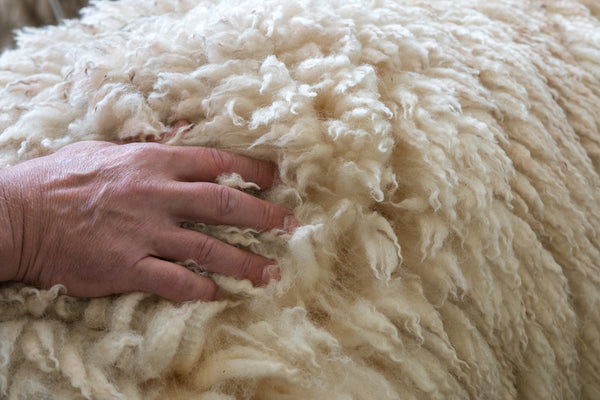Know Your Fiber: Fineness and Fiber
Posted on November 11 2020

Fiber is not just fiber – the specific qualities of various fibers make some more suitable for some projects than for others. Of particular interest to crafters who work with wool and other fibers is how fine or how coarse their fiber is. So, what exactly makes a fine fiber fine, a coarse fiber coarse, and how do we determine fineness or coarseness?
In today’s clothing markets, fine fibers such as Merino wool, cashmere, silk, and cotton are especially valued, as they can be worn comfortably right next to the skin. Most knitters, crocheters, and weavers also look for yarns with fine fibers when creating clothing, and for the same reason. Nobody likes an itchy scarf against their neck. However, crafters who are creating other goods such as blankets, rugs, or outerwear meant to be worn over other clothing have a deep appreciation for the medium to coarse fibers – the coarser the fiber the more wear and tear it can take. A superfine cashmere sweater may only last for a few winters before it needs to be mended, but a medium to coarse wool cardigan will last for many, many years before it need to be repaired, if it ever needs to be repaired at all.
In general, the smaller the diameter of the fiber the finer it is, and the larger the diameter the coarser it is. Over the last century, fineness has been measured in a few different ways. Wool in the United States was graded by the blood system until around 1955. The blood system measured the fineness of wool by the percentage of Merino blood a sheep had. There were six grades, from finest to most coarse: ½ blood, ⅜ blood, ¼ blood, low ¼ blood, common and braid This was followed by the more precise numerical count system, a system still sometimes used in the United States today. This system divides wool into 14 different grades from 80s (the finest) to 36s (the coarsest). The numbers are determined by the weight of wool top that can be spun into 560 yarns of yarn. For example, if one pound of wool top is spun into 35,840 yards of yarn (560 times 64), then that wool fineness in the 64s.
So, the blood system is not really accurate, and the numerical count system is complex. Fortunately, there is yet a third system preferred by most of us in the fiber world – measuring the diameter of fibers in microns. When you go to an LYS this is the measurement that staff may be able to give to you, particularly if you are purchasing bulk fiber for spinning or felting. When this measurement is available, it is can be expressed as an average or a range. For example, our Blue Faced Leicester top has an average micron width of 26 microns, and our Moorit Shetland top has a range of 29-31 microns. These measurements are given to retailers by the farmers and wholesalers from whom we purchase, which we in turn provided to our customers.
That said, there is a little wibbly-wobbliness in getting everyone to agree on exactly what micron widths translate into exactly which fineness grades. However, in general, it looks something like the chart below:


Follow US